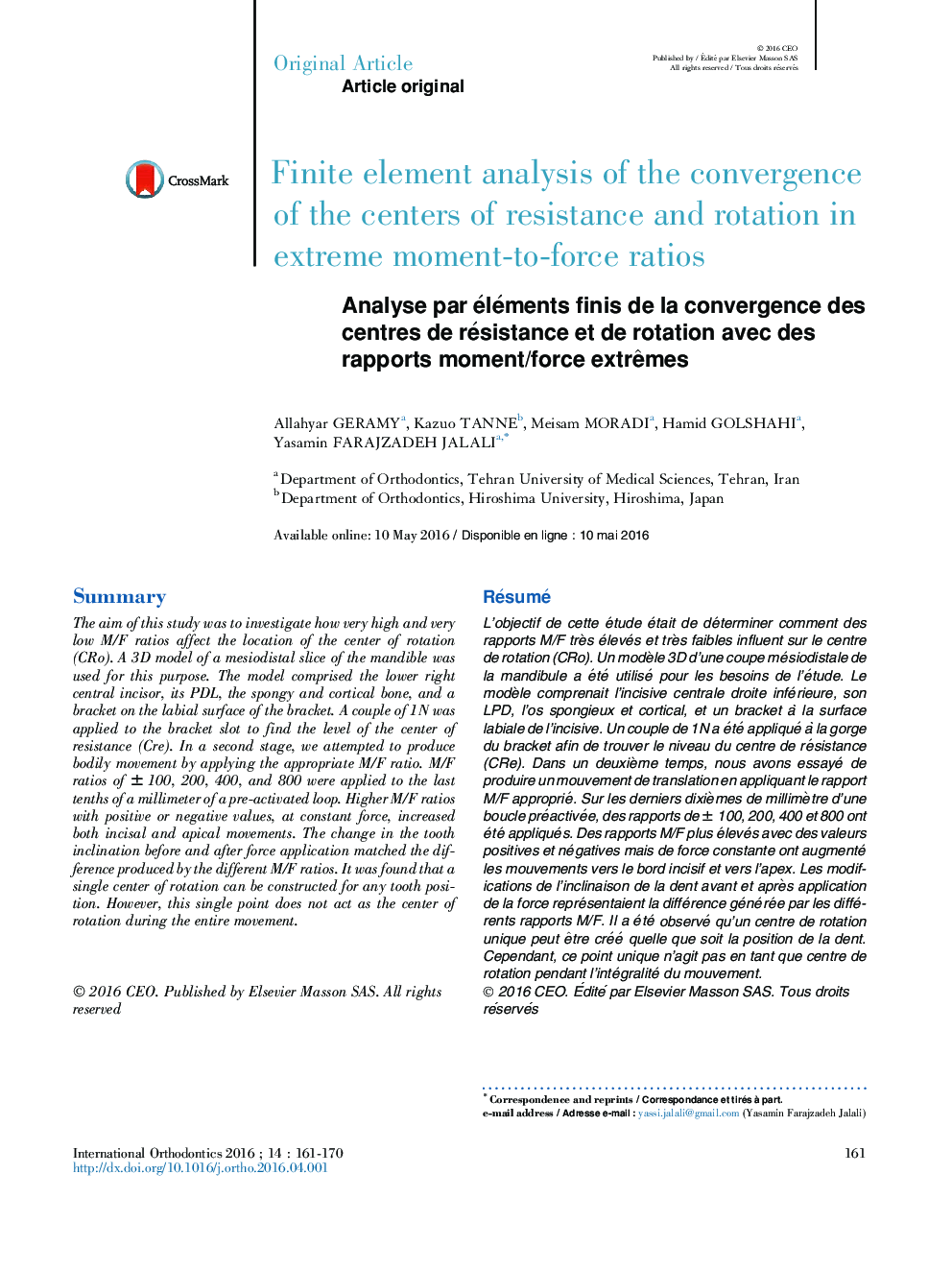| Article ID | Journal | Published Year | Pages | File Type |
|---|---|---|---|---|
| 3135326 | International Orthodontics | 2016 | 10 Pages |
Abstract
The aim of this study was to investigate how very high and very low M/F ratios affect the location of the center of rotation (CRo). A 3D model of a mesiodistal slice of the mandible was used for this purpose. The model comprised the lower right central incisor, its PDL, the spongy and cortical bone, and a bracket on the labial surface of the bracket. A couple of 1N was applied to the bracket slot to find the level of the center of resistance (Cre). In a second stage, we attempted to produce bodily movement by applying the appropriate M/F ratio. M/F ratios of ± 100, 200, 400, and 800 were applied to the last tenths of a millimeter of a pre-activated loop. Higher M/F ratios with positive or negative values, at constant force, increased both incisal and apical movements. The change in the tooth inclination before and after force application matched the difference produced by the different M/F ratios. It was found that a single center of rotation can be constructed for any tooth position. However, this single point does not act as the center of rotation during the entire movement.
Related Topics
Health Sciences
Medicine and Dentistry
Dentistry, Oral Surgery and Medicine
Authors
Allahyar Geramy, Kazuo Tanne, Meisam Moradi, Hamid Golshahi, Yasamin Farajzadeh Jalali,
